I’ve now made three batches of bread using the methods of Chad Robertson, outlined in his book Tartine Bread, and I’ve finally gotten the hang of it.
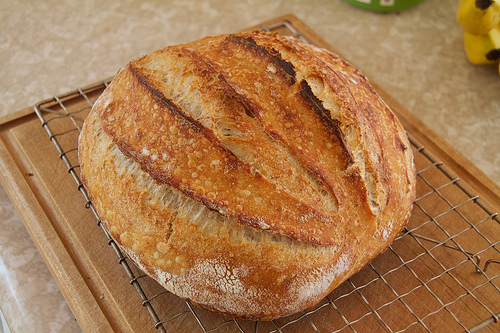
The first attempt came out quite dense, with all the air distributed in one giant hole located around the centre-top of the loaf. It was so dense it was hardly edible. It only really rose in the spot where the air was trapped. And while Robertson advocates for a less sour loaf, I wanted to attempt to achieve a fairly sour flavour, and this didn’t yet have it. Unfortunately most of the loaf was pitched because it wasn’t very edible after it cooled, due to it’s density. I figured I hadn’t turned it effectively during the bulk rise phase.
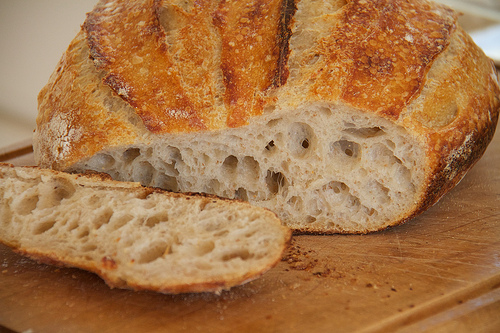
For my next attempt I made one of the loaves with dates, and the other just plain. Both of these turned out much better. They rose well and the holes were well distributed. For the date bread, I baked it after leaving it for it’s final rise in the fridge overnight. The round version of the loaf did it’s final rise in the fridge with the date loaf, but then I left it on the counter for the majority of the day, too. The result was a very flavourful loaf, even though it spent twice as long in the final rise as outlined in the book.
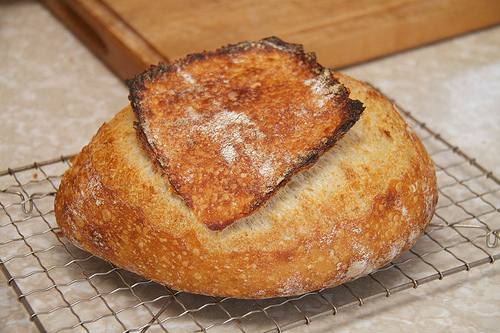
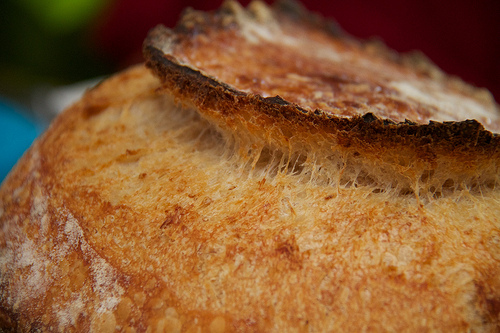
For the latest loaf (pictured at the top of this post) I split the recipe in half. The one in the book makes two loaves and we just don’t have the capacity to eat all that bread. My process is that I keep my starter in the fridge until the night before I intend to make leaven. Then I pull it out, feed it, and the next morning or evening, start the leaven (which needs to ferment about 8 to 12 hrs). This weekend my leaven was ready on Saturday morning, so I got the bread going and did the bulk rise phase through the day, turning it every so often. It spent about 15 hours or so in a basket for the final rise, overnight, and I baked it this morning. It tasted fabulous, and as you can see, had very well distributed holes.
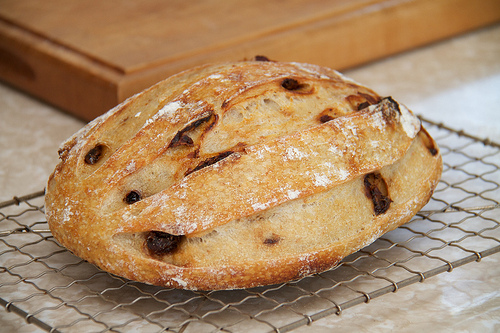
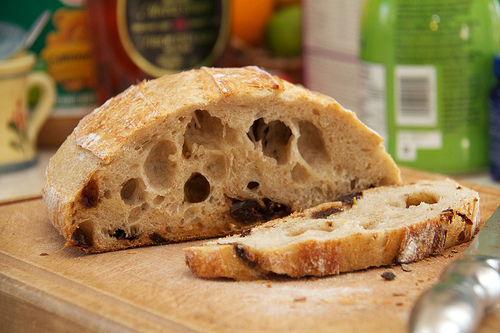
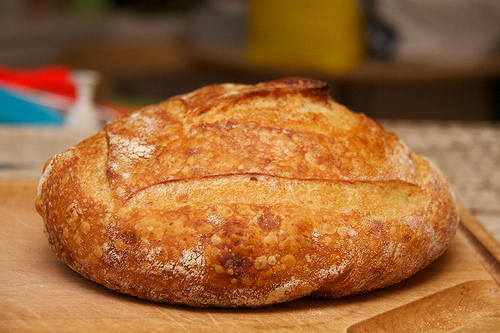
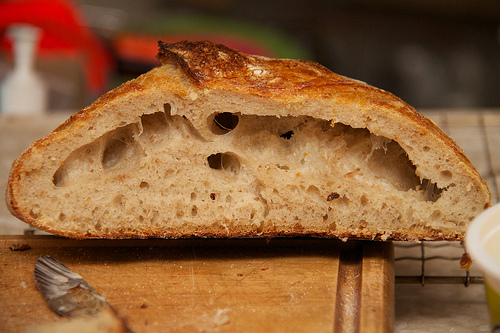
I find that making the dough and the following bulk rise phase are the most challenging to time. I want to start playing with the timing, to see if I can tighten it up. It’s a 3 to 4 hour phase in the book, and I just find that so challenging to make happen during the week. It’s clear I can let the loaf take a really long time during the final rise without the loaf becoming overwhelmingly sour, so if I can get the dough made a couple times a week and then bake the bread when I get home from work, that would be the best option. On weekends its easier to manage but we easily eat half the loaf almost immediately, so it won’t last us more than a day or two.
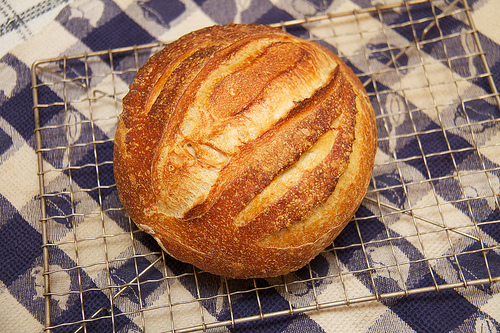
Anyway, I am quite pleased with how the loaves are turning out now, and I feel like I can start getting creative with flavours, making things like olive bread, date caraway bread, and other fun things. The Dutch oven is key to the incredibly satisfying crunch of the crust. That caramelized, blistery surface is just gorgeous.
That bread looks so good! I’ve had a lot of luck with the tartine method too and found it really adaptable to different schedules. I’ve worked in some good bakeries in Vancouver and Would rather eat my own bread any day!